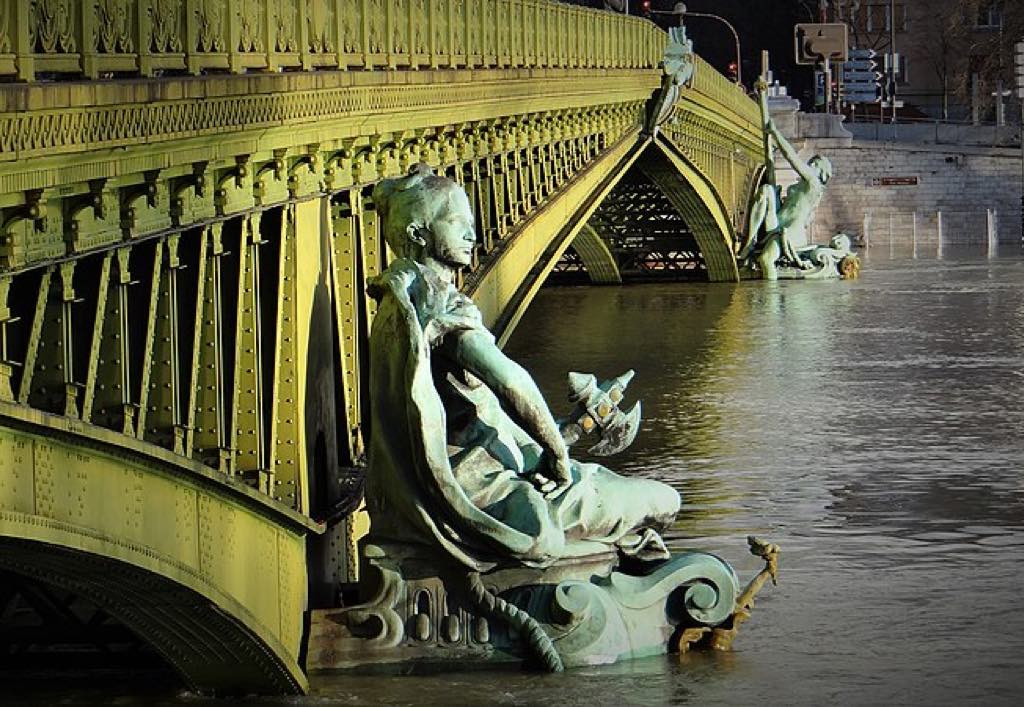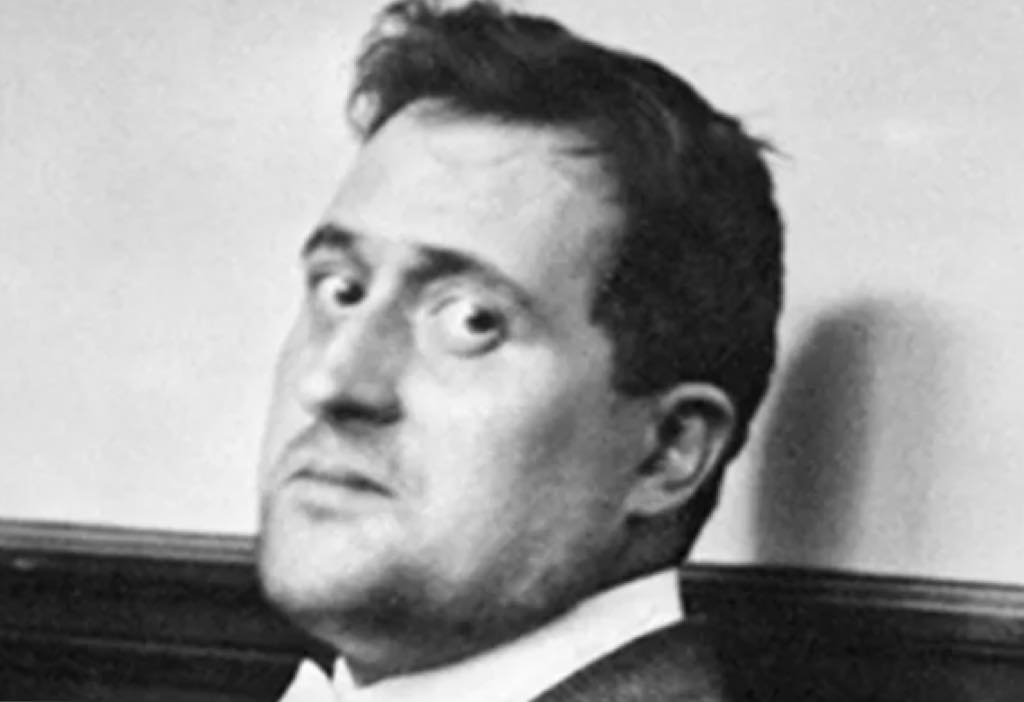
Note to readers: You may choose to read this analysis of Le Pont Mirabeau here or listen to it on the audio file at the end of the article.
I wanted to concentrate this week on a single poem with an appropriately Parisian setting for those readers of Paris Update who might be missing their favorite city at this time of restricted travel and closed borders. A few weeks ago, I spoke about Baudelaire’s collection Les Fleurs du Mal, in which many poems evoke mid-19th-century Paris. The poem I wish to discuss here is an iconic piece from a collection of poetry that appeared just before World War I, in 1913, quite a year for culture in Paris: Igor Stravinsky’s brilliantly wild ballet music The Rite of Spring was first performed in the Théâtre des Champs-Elysées, causing an uproar on the opening night, and the first installment of Marcel Proust’s À la Recherche du Temps Perdu was published.
The year 1913 also saw the publication of Guillaume Apollinaire’s poetry collection Alcools (Alcohols). The title, which was a late decision by the poet, signals an approach to poetry that was new and dangerous, suggesting the purity of distillation and evoking both the excitement and sadness of drunkenness. Apollinaire, who was close to the Cubist circle of painters, was involved romantically with the great avant-garde painter Marie Laurencin, who is thought to have inspired many of the poems in Alcools.
The long poem that opens the collection, “Zone,” announces itself in the very first line as a piece that experiments with poetic form and subject matter, breaking with the past: “A la fin tu es las de ce monde ancien (You are tired at last of this old world).” Much of the poem is set in various Parisian landmarks, but it also moves between different times and places. Two lines bring out the importance of the title of the collection:
Et tu bois cet alcool brûlant comme ta vie
Ta vie que tu bois comme une eau-de-vie
(And you drink that alcohol that burns like your life
Your life that you drink like brandy)
By the final line, all notion of syntax, even in a poem that has no punctuation at all, disintegrates, with the disparate words Soleil cou coupé (literally, “Sun neck cut,” but rather more poetically rendered by Donald Revell as “Sun cut throated”).

The second poem of the collection, “Le Pont Mirabeau,” seems at first glance to be much more traditional both in its form and its themes of time passing and unhappy love. Here is the text of the poem with a variety of different translations. We also have the unique opportunity to hear a recording of Apollinaire himself reciting the poem.
“Le Pont Mirabeau,” which has an eternal quality that sounds nothing like the modernist manifesto that “Zone” is, seems not to be breaking the same kinds of boundaries. And yet, far from being a conscious imitation of earlier poetry, “Le Pont Mirabeau” is very much of its time. First of all, the lack of punctuation, as in the other poems in the collection, allows words and images to flow into each other just as the River Seine flows through the poem. The repeated refrain also adds to the sense of circularity and movement.
Another sign of the poem’s modernity lies in Apollinaire’s choice of a bridge that had only recently been constructed, in the final years of the 19th century, rather than one of the much older Paris bridges. He had no fear of using a modern piece of engineering as an emblem of the poet who remains, like the bridge, while his loves and time itself flow away like the river below.
While the first two stanzas seem to offer the hope of love, those that follow describe love as impossible. The brutal image of the cut throat that ended “Zone” seems to return with the description of hope as “violent” here. In the end, everything but the bridge and the poem itself is transient. There is a fusion of the human, the natural world and technology, as in the image of the clasped hands of lovers mirroring the bridge itself, perhaps one of the most memorable parts of this beautiful poem.
Apollinaire continued to experiment with the shape and sound of his poetry. His collection Calligrammes, published soon after his death in 1918, made the layout and typography essential components of his writing; the visual shape of the words on the page was as important as their meaning.
The poet’s early death at the age of 38 is particularly poignant at this moment. Two years after being wounded while fighting in World War I, he succumbed to the Spanish flu pandemic in 1918, the last time that a global virus has taken the lives of so many people across the world.
